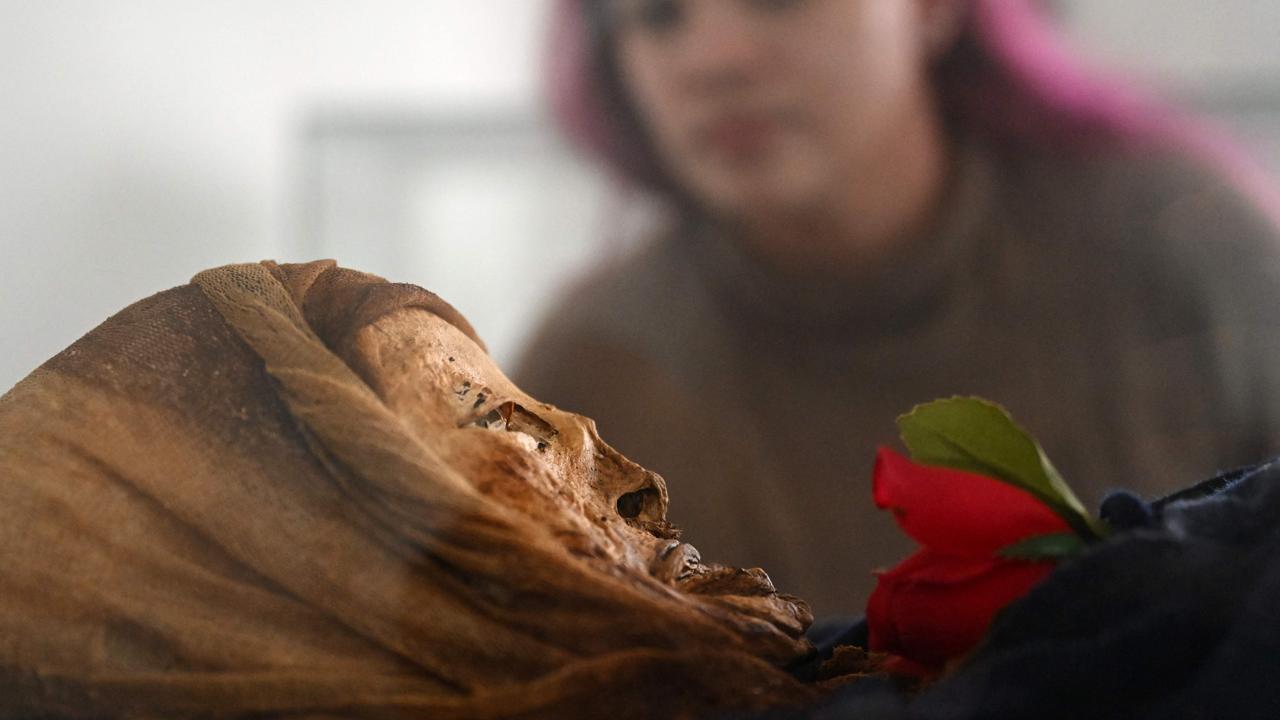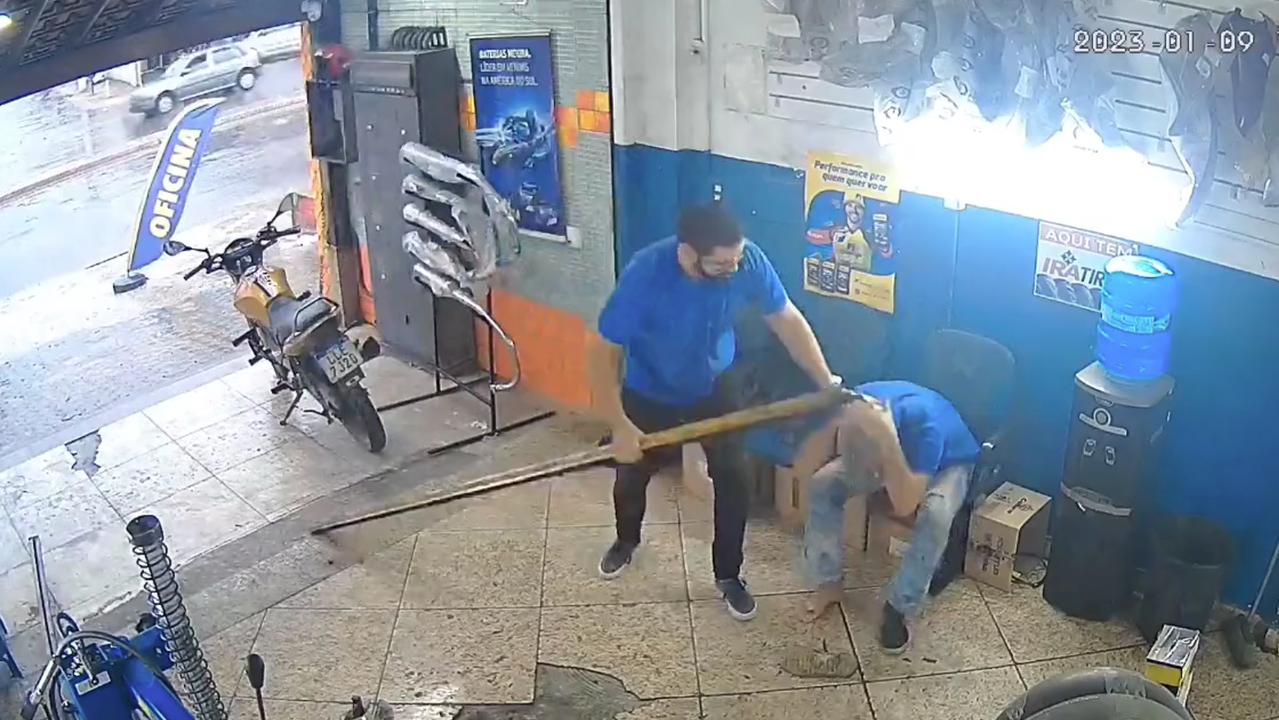What locals call the ‘gates of hell’: inside the infamous mines of Potosi
LOCALS warn this is no place for “wimps or woosies”. That might be why in this harsh Bolivian terrain, water, booze and dynamite are essential.
IT’S pitch black, I have a pocket full of explosives and I’m thirsty. Caleb has the water so my only option is a plastic bottle of pure grain alcohol.
“Caleb?” I splutter, a quiver of nervousness in my voice. A few moments pass. I take several deep, laboured breaths, my lungs filling with humid, dust-filled air.
“I’m right here buddy,” he answers, inches away from me. “I’m getting pretty hungry. Do you think they have Macca’s down here?”
This makes me laugh, which I needed — and he knew it.
This conversation happened deep inside a mangled mountain, just outside the town of Potosi, Bolivia. We’d arrived that morning, after spending four days crossing the famous Bolivian Altiplano, one of the driest places on Earth, famous for its salt flats and obligatory cringe-worthy photos.
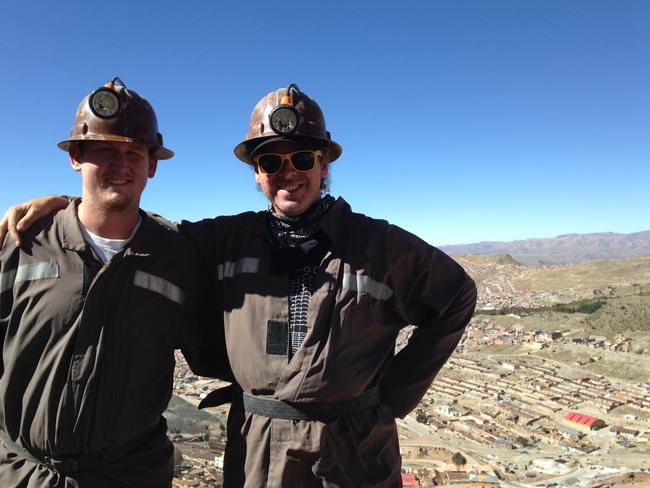
It’s also famous for terrible lodging, crappy food, long bumpy roads and a distinct lack of oxygen.
After this kind of “rewarding” trip, any sane person would treat himself at an above average hostel, a hot shower and a meal at the best tourist restaurant in town. Not us though. My mate Caleb and I decided to check out the famous mines of Potosi.
We booked the tour, which started just like any other day trip around South America by grunting at the other punters and trying your best to show how well travelled you are.
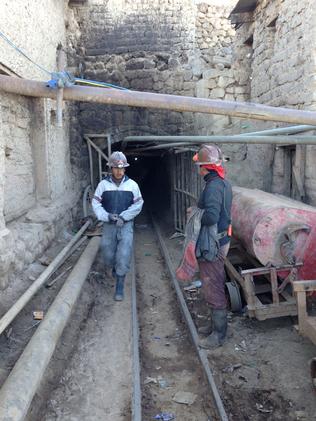
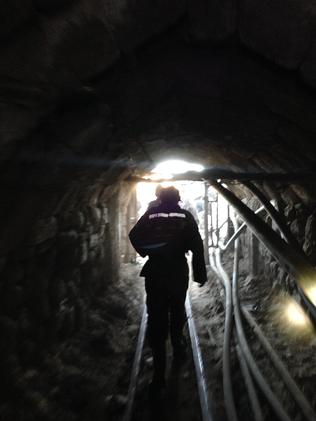
After being kitted out with ill-fitting hard hats and overalls we jumped in a rickety van, which bumbled us through cobbled streets until we lurched to a stop outside a small shack.
The rusty door screeched open and we were waved into what turned out to be a shop. The store had the standard goods: Bolivian Cola, snacks, water, dynamite, chewing gum and grain alcohol.
I parted with the equivalent of $5 and fell back into the van, grinning like a teenager at a strip club with a sixpack of dynamite, a bottle of grain alcohol, two litres of cola and some water.
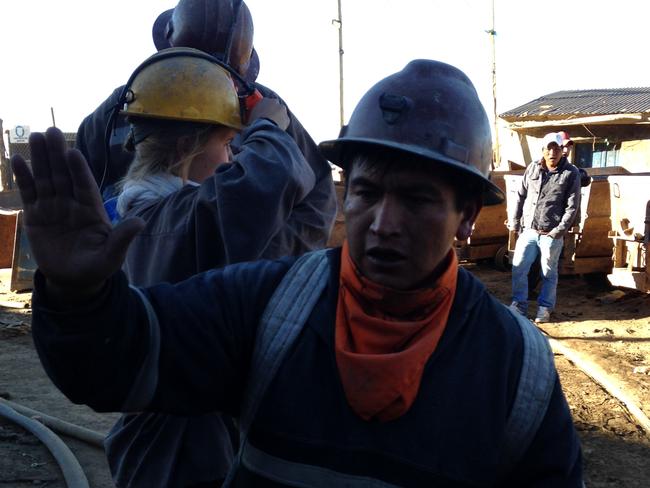
Minutes later we were standing on the edge of a cliff, halfway up the mountain that overlooks Potosi, which the locals called Sumaq Urqu (beautiful mountain) before the Spanish arrived, aptly renaming it Cerro Rico (rich mountain). Our guide said a few quick words about safety to us: Don’t fall down a hole, don’t get hit by a runaway mine car, don’t smash your head on the roof and don’t light your dynamite. Okay, I got this.
Bolivians aren’t tall. I am. This created a problem. It’s also worth mentioning I’m a little claustrophobic. Why did I agree to this?
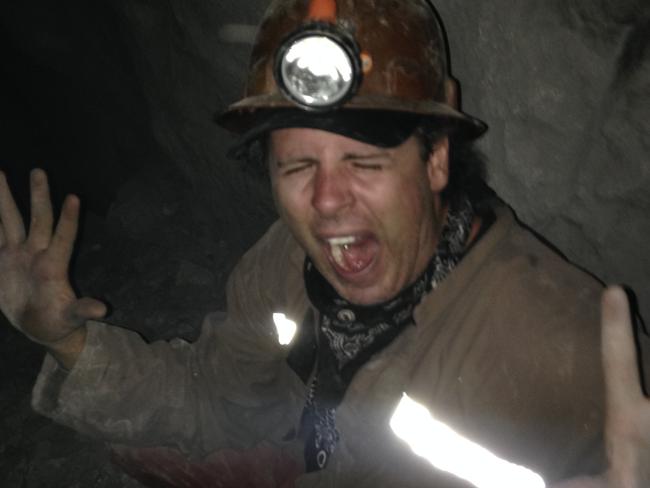
Fast forward an hour and we were deep inside a mountain that has claimed tens of thousands of lives to mining accidents over the centuries. We were literally at the gates of what the locals believe to be hell.
We stopped at a shrine to the devil, where we paid tribute with a few slogs of our booze and a cigarette then we pushed deeper, into hotter, dustier, shallower shafts until I found myself commando, crawling through passages that a cat would consider a tight squeeze.
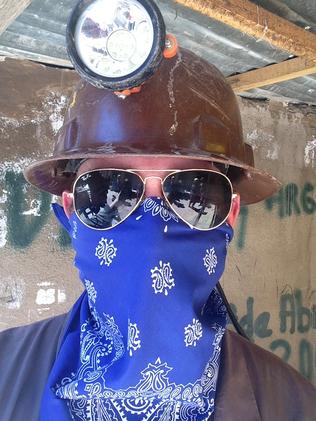
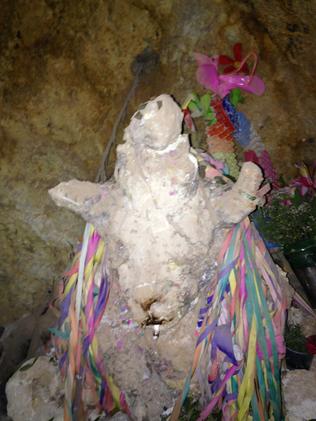
Suddenly we arrive at a ladder, not the aluminium type you’d find at Bunnings, but the type a six-year-old would build for his tree house. I shined my headlamp upwards, spotting bent nails and wonky craftsmanship.
I hesitantly climbed, one splintery rung at a time, thinking that I’d be a goner if I took a plunge here. After ascending what must’ve been three storeys worth of wobbly ladder I planted my feet on solid rock.
Then we heard drilling.
A squat Bolivian miner was wedged into a crevice above the shaft we were crouched in. Our group gathered and we gifted our dynamite, booze and Cola to him.
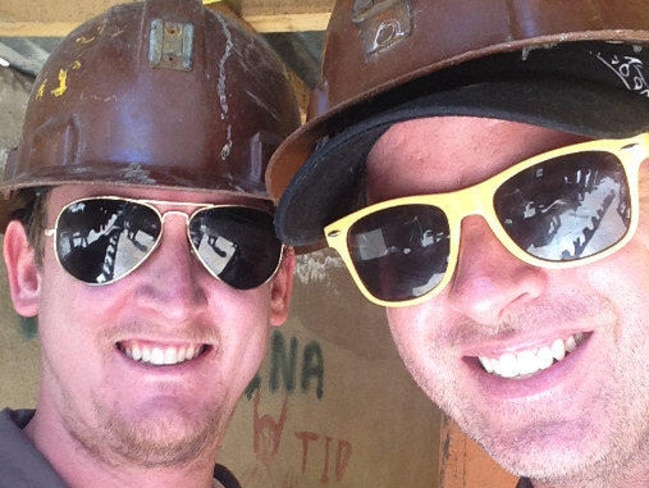
After a few caps of grain alcohol were shared, he let us take a turn on the drill, then we stuffed dynamite into the holes, he attached wicks to them and we said goodbye.
Back we went down the ladder before we were signalled to wait. Moments passed, complete silence, then THUD. A rush of sticky air smacked our faces along with a sense of completion — the miner had detonated our gifts. I hoped that the explosion provided a cache of silver for the team of hard grafters we’d met.
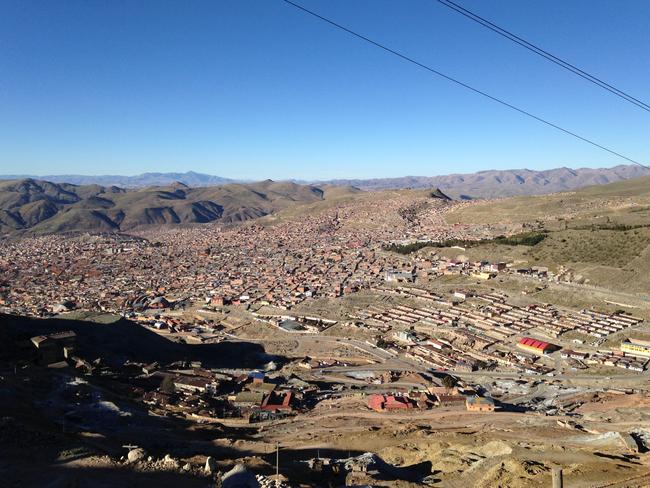
Companies don’t employ the miners; individuals simply take a contract out on a plot of the mountain and are allowed to do as they please. They supply their own materials and sell any minerals they gather to buyers in town. These enterprising young men (sometimes children) allow tourists into their mines in exchange for supplies, which increases their profit margin.
After arriving back at the hostel, I still needed that drink. Not water, definitely not grain alcohol — a nice bottle of rum did the trick.
IF YOU’RE GOING
Tour company: Koala Tours
Getting there: Potosi is a few hours by bus or taxi from Sucré
Safety: This tour is not suitable for anyone that suffers from even minor claustrophobia or breathing problems. Be sure to bring plenty of water.

